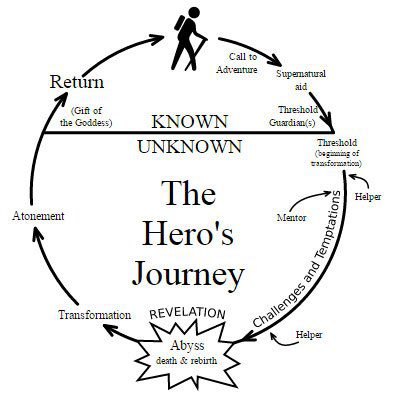What is the underworld?
In various mythology, the underworld a place deep underground where the souls of the departed go. I don’t believe there is literally a dark netherworld deep beneath the surface of the world nor do I believe that it’s a spiritual place where we go when we die. To explain how I view the underworld, I have to refer to analytical psychology, to the work of Carl Jung and Joseph Campbell.
To Jung, the process of becoming the true individual that you really are is called individuation. In order to achieve this final state of wholeness, of integration, you have to go through various stages of life drama that are symbolised by the Hero myth, a narrative identified by Campbell.

The basic pattern of the hero’s journey goes like this: The hero is born under humble, but extraordinary conditions. Frequently, there is a mystery around the parentage of the hero, especially the father. Growing up, the hero is not like other children. There is a call to adventure, which awakens the hero to a special destiny. In response to the call, the hero takes a journey, usually a dangerous one to an unknown place, and it often includes a descent to the depths of some place – a cave, a forest, the sea, the underworld. Usually, the hero is triumphant, transformed, and his success forges a new, healthier relationship.
Examples of the hero’s journey include Moses, Jesus, King Arthur, Luke Skywalker, Frodo, and Aragorn. It might not escape you that these are all men. It didn’t escape Campbell either or a number of psychotherapists that have followed Jung. That will be a topic for another day.
Campbell describes 17 stages of this monomyth divided into three sections: Departure, Initiation, and Return. It is during the Initiation stage that the hero takes the mortifying descent into the underworld. The hero enters the underworld to face the Shadow, to be transformed, to die and be reborn.
“It is by going down into the abyss that we recover the treasures of life. Where you stumble, there lies your treasure.” -Joseph Campbell
Gilgamesh descends to the underworld to meet Utnapishtim in a quest for immortality. For his twelfth labour, Heracles enters the Underworld to capture Cerberus. Inanna descends to the Underworld and as she passes through each of its seven gates, she is stripped of her garments, which represent her power. By the time she arrives before her dark sister Ereshkigal, she is naked and, thus, powerless.
The hero’s journey is a narrative pattern that appears not only in myth and storytelling, but also religious ritual, and psychological development. The underworld is a place in which we must all descend to as part of our shadow work. It is only through this journey that we can forge an everlasting relationship between our light and darkness to find wholeness.

